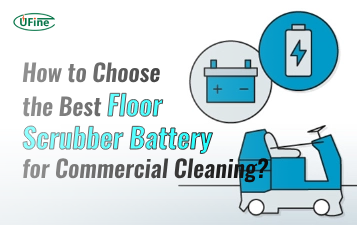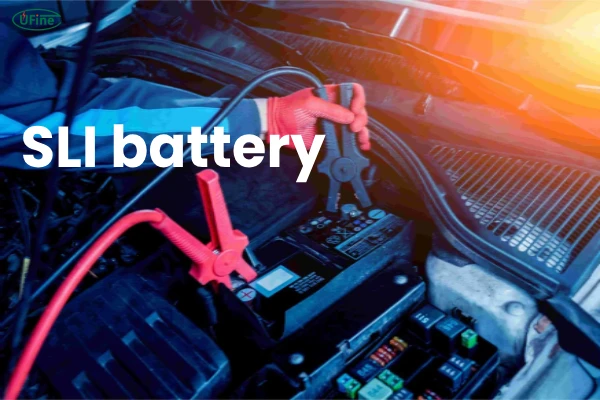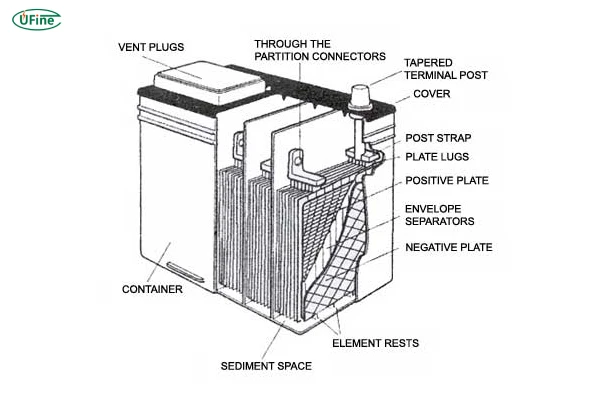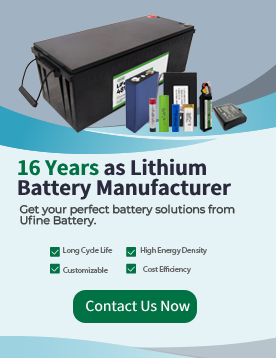If you’ve ever turned the key in your car and heard that satisfying roar of the engine coming to life, you can thank an SLI battery. But what exactly makes these batteries so crucial for vehicles? How do they differ from other battery types like AGM or deep cycle? And how can you ensure yours lasts as long as possible?
In this detailed guide, we’ll dive deep into the world of SLI batteries—exploring how they function, the different types available, how they compare to alternatives, and essential maintenance tips to maximize their lifespan. By the end, you’ll have a clear, expert-level understanding of these power-packed units.
Part 1. What is an SLI battery?
An SLI battery (Starting, Lighting, Ignition) is a lead-acid battery specifically engineered to deliver short, high-power bursts to start a vehicle’s engine, power its lights, and keep the ignition system running. Unlike deep-cycle batteries, which provide steady power over long periods, SLI batteries are designed for quick energy discharge followed by immediate recharging from the alternator.
Key Characteristics of SLI Batteries:
✔ High Cranking Amps (CA & CCA): Delivers strong current to start engines, even in cold weather.
✔ Low Internal Resistance: Allows rapid discharge without overheating.
✔ Thin Lead Plates: Optimized for fast energy release, not deep cycling.
✔ Maintenance Requirements: Flooded SLI batteries need periodic water refills, while AGM/EFB types are maintenance-free.
Did You Know? Most traditional cars, motorcycles, and boats rely on SLI batteries because they’re cost-effective and reliable for everyday ignition needs.
Part 2. How does an SLI battery work?
Ever wondered what happens when you turn the key? Here’s a detailed breakdown:
-
Ignition Triggered – When you start the car, the battery sends a high-current surge (300-600 amps) to the starter motor.
-
Engine Cranks – The starter motor turns the engine’s flywheel, initiating combustion.
-
Alternator Takes Over – Once the engine runs, the alternator recharges the battery and powers the electrical system.
-
Repeat Cycle – The battery remains mostly idle until the next ignition.
Why This Matters: SLI batteries aren’t designed for deep discharges. Repeatedly draining them below 50% can severely shorten lifespan.
Part 3. Types of SLI batteries
Not all SLI batteries are the same. The three main types are:
A. Flooded (Wet Cell) SLI Batteries
-
Most common & affordable
-
Requires maintenance (checking electrolyte levels)
-
Vents hydrogen gas (must be installed upright)
-
Best for: Standard cars, trucks, and boats
B. AGM (Absorbent Glass Mat) SLI Batteries
-
Spill-proof & maintenance-free
-
Handles vibrations better (great for off-road vehicles)
-
Higher cranking power than flooded batteries
-
Best for: Luxury cars, performance vehicles, and harsh conditions
C. EFB (Enhanced Flooded Battery) SLI Batteries
-
Upgraded version of flooded batteries
-
Better charge acceptance (ideal for start-stop technology)
-
Longer lifespan than standard flooded batteries
-
Best for: Modern cars with auto start-stop systems
Part 4. Learn about lithium SLI batteries
While traditional SLI batteries use lead-acid chemistry, lithium SLI batteries are gaining popularity due to their superior performance.
Key Advantages of Lithium SLI Batteries:
✔ Lighter Weight – Up to 70% lighter than lead-acid batteries.
✔ Higher Cranking Power – Delivers stronger cold-cranking amps (CCA) for reliable starts.
✔ Longer Lifespan – Lasts 2-3 times longer than conventional SLI batteries.
✔ Zero Maintenance – No need to check water levels or clean terminals.
✔ Faster Recharging – Handles alternator charging more efficiently.
Best Uses for Lithium SLI Batteries:
-
Performance & racing cars (reduces weight while increasing power)
-
Marine applications (better resistance to vibration and corrosion)
-
Off-grid & solar setups (can handle occasional deep cycles better than lead-acid)
Part 5. SLI battery vs AGM battery: what’s the difference?
| Feature | SLI Battery (Flooded) | AGM Battery |
|---|---|---|
| Maintenance | Requires water refills | Maintenance-free |
| Vibration Resistance | Moderate | Excellent |
| Deep Cycle Ability | Poor | Moderate |
| Cost | 150 | 300 |
| Lifespan | 3-5 years | 4-7 years |
Which One Should You Choose?
-
AGM is better if you need maintenance-free durability or have a high-power electrical system.
-
Standard SLI is fine for budget-friendly, traditional vehicles.
AGM VS Lithium VS Lead-Acid Battery: Comprehensive Comparison
Part 6. SLI battery vs EFB battery: what’s the difference?
EFB batteries are an improved version of flooded SLI batteries, designed for start-stop vehicles.
✔ EFB Benefits:
-
Handles frequent engine restarts better
-
30% longer lifespan than standard SLI
-
More resistant to partial discharges
✔ When to Choose EFB:
-
If your car has start-stop technology
-
If you want better durability without switching to AGM
Part 7. SLI battery vs deep cycle battery: what’s the difference?
| Feature | SLI Battery | Deep Cycle Battery |
|---|---|---|
| Primary Use | Engine starting | Long-term power (RVs, solar) |
| Discharge Depth | 10-20% max | 50-80% regularly |
| Plate Thickness | Thin (for high bursts) | Thick (for endurance) |
| Lifespan | 3-5 years | 5-8 years |
Key Takeaway:
-
Never use an SLI battery for deep cycling—it will fail quickly.
-
Deep cycle batteries can’t deliver the same cranking amps for engine starts.
Part 8. Best uses for SLI batteries
✔ Automotive: Cars, trucks, motorcycles
✔ Marine: Boat engine starting (not trolling motors!)
✔ Small Engines: Lawnmowers, ATVs, generators
✔ Classic Cars: Reliable power for vintage vehicles
Pro Tip: For high-performance applications, consider Ufine’s custom lithium SLI batteries—lighter, more powerful, and longer-lasting than lead-acid.
Part 9. Choosing the right SLI battery charger
Not all chargers work well with SLI batteries. Here’s what to look for:
✔ Smart Chargers – Prevents overcharging & adjusts voltage automatically.
✔ Trickle Chargers – Great for long-term storage (keeps battery topped up).
✔ AGM-Compatible Mode – If using an AGM SLI battery.
Avoid:
❌ Old manual chargers (can overcharge & damage the battery).
❌ Deep cycle chargers (wrong charging profile for SLI).
Part 10. SLI battery care & maintenance
-
Check Electrolyte Levels Monthly (for flooded batteries).
-
Clean Terminals Regularly (use baking soda & water to prevent corrosion).
-
Avoid Full Discharges (never let voltage drop below 12.4V).
-
Store Properly (keep in a cool, dry place if unused).
-
Recharge After Short Trips (frequent short drives drain the battery).
-
Test Voltage Annually (use a multimeter to check health).
-
Replace Every 3-5 Years (even with good maintenance).
Part 11. Is an SLI battery right for you?
If you need reliable engine starts and don’t require deep cycling, an SLI battery is the best choice. For modern cars with start-stop systems, consider EFB or AGM.
Part 12. FAQs
Can I use an SLI battery for my RV or solar system?
No. SLI batteries are not designed for deep cycling. Use a deep cycle or lithium battery instead.
How do I know if my SLI battery is dying?
Signs include: Slow engine cranking; Dim headlights; Swollen battery case; Frequent jump-starts needed
Can I replace a lead-acid SLI battery with a lithium one?
Yes! Lithium SLI batteries (like those from Ufine Battery) are direct replacements and offer better performance.
Why does my SLI battery die in cold weather?
Cold reduces chemical reactions in lead-acid batteries. Lithium SLI batteries handle cold much better.
How long can an SLI battery sit unused?
About 2-3 months before it discharges completely. Use a trickle charger for long-term storage.
Related Tags:
More Articles

How to Choose the Best Floor Scrubber Battery for Commercial Cleaning?
Selecting the ideal floor scrubber battery ensures a long runtime, rapid charging, and minimal maintenance for efficient commercial cleaning operations.
Battery for Blower vs Battery for Leaf Vacuum: Which One Should You Choose?
Battery for blower vs leaf vacuum—learn the key differences in power, fit, and runtime to choose the right battery for your outdoor tool needs.
How to Choose the Right Battery for Blower?
Choosing the right blower battery? Consider voltage, capacity, chemistry & usage. This guide helps match the best battery for peak performance.
How to Choose the Best Insulated Battery Box for Lithium Batteries?
Choosing the Best Insulated Battery Box for Lithium Batteries? Discover key factors such as size, material, and safety for optimal protection and performance.
7 Critical Elements on a Lithium Battery Shipping Label
What must be on a lithium battery shipping label? Learn 7 key elements to ensure safety, legal compliance, and correct handling across all transport modes.





